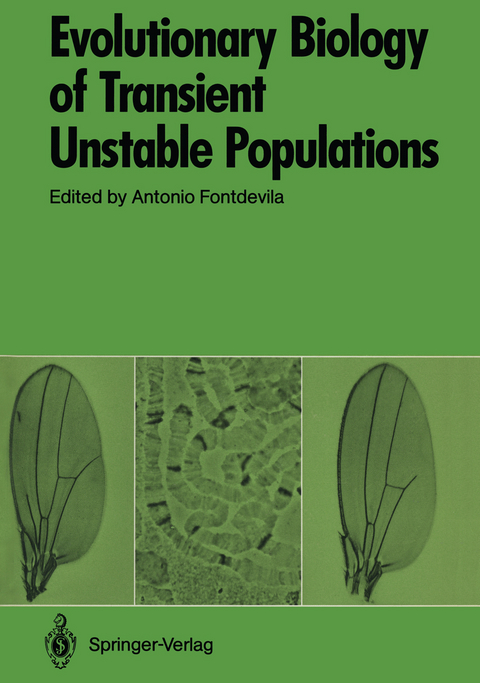
Evolutionary Biology of Transient Unstable Populations
Springer Berlin (Verlag)
978-3-642-74527-0 (ISBN)
A Founder, Colonizing and Bottleneck Populations.- A. 1. Theoretical Framework.- Phenotypically Plastic Characters in Isolated Populations.- Multivariate Morphometrics of Bottlenecked Populations.- Niche Overlaps and the Evolution of Competitive Interactions.- Marginal Populations in Competitive Guilds.- A. 2. Experimental.- Flush-Crash Experiments in Drosophila.- Founder Effects in Colonizing Populations: The Case of Drosophila buzzatii.- Mating Probability, Body Size and Inversion Polymorphism in a Colonizing Population of Drosophila buzzatii.- Colonization and Establishment of the Paleartic Species Drosophila subobscura in North and South America.- Short Range Genetic Variations and Alcoholic Resources in Drosophila melanogaster.- The Variance in Genetic Diversity Among Subpopulations is More Sensitive to Founder Effects and Bottlenecks Than is the Mean: A Case Study.- B Evolutionary Mechanisms.- B. 1. Molecular.- Mobile Genetic Elements and Quantitative Characters in Drosophila: Fast Heritable Changes Under Temperature Treatment.- The Potential Evolutionary Significance of Retroviral-like Transposable Elements in Peripheral Populations.- Paradoxes of Molecular Coevolution in the rDNA Multigene Family.- B. 2. Chromosomal.- Two Ways of Speciation.- Karyotypic Repatterning as one Triggering Factor in Cases of Explosive Speciation.
| Erscheint lt. Verlag | 13.12.2011 |
|---|---|
| Zusatzinfo | XI, 293 p. |
| Verlagsort | Berlin |
| Sprache | englisch |
| Maße | 170 x 242 mm |
| Gewicht | 529 g |
| Themenwelt | Naturwissenschaften ► Biologie ► Ökologie / Naturschutz |
| Naturwissenschaften ► Biologie ► Zellbiologie | |
| Naturwissenschaften ► Biologie ► Zoologie | |
| Schlagworte | Biology • Development • Developmental Biology • Ecology • Evolution • evolutionary biology • Genetics • Population Genetics • the origin |
| ISBN-10 | 3-642-74527-X / 364274527X |
| ISBN-13 | 978-3-642-74527-0 / 9783642745270 |
| Zustand | Neuware |
| Haben Sie eine Frage zum Produkt? |
aus dem Bereich


